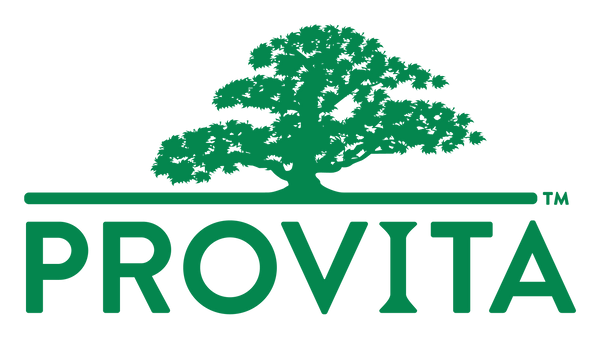These days especially, phrases like “immune-boosting” get a lot of attention. No one wants to get sick so we are always on the lookout for the next great piece of advice, but our immunity is so much more than just cold and flu protection.
Our immune system is a complex network of cells, tissues, and organs that work together to protect our bodies from infections and diseases. When our immune system is working properly, it can identify and eliminate harmful pathogens and cancer cells before they can cause harm. However, our immune system can become weakened by factors such as stress, poor nutrition, lack of sleep, and certain medical conditions. This can increase our risk of infections and diseases. Fortunately, there are many techniques that can help to boost our immune system and improve our overall health.
Here are some immune-boosting techniques that you can try:
- Eat a healthy diet: Eating a diet that is rich in fruits, vegetables, whole grains, and lean protein can help to provide the nutrients and antioxidants that our immune system needs to function properly. Some foods that are particularly beneficial for the immune system include citrus fruits, berries, spinach, broccoli, garlic, ginger, and turmeric. (1)
- Get regular exercise: Exercise has been shown to have a number of benefits for the immune system, including improving the circulation of immune cells and reducing inflammation. Aim to get at least 30 minutes of moderate exercise most days of the week.(2)
- Get enough sleep: Sleep is essential for our immune system to function properly, as it helps to regulate the production of immune cells and antibodies. Aim to get 7-8 hours of sleep each night. (3)
- Reduce stress: Stress can have a negative impact on the immune system by reducing the activity of immune cells and increasing inflammation. To reduce stress, try relaxation techniques such as deep breathing, meditation, yoga, or tai chi. (4)
- Take dietary supplements like AHCC.
Active Hexose Correlated Compound (AHCC) is a dietary supplement made from the extract of shiitake mushrooms, which are native to Japan and China. It’s a Powerful & unique ANTIOXIDANT formula that is a mixture of polysaccharides, amino acids, lipids, and minerals. AHCC may boost the immune system by increasing the activity of natural killer cells, which are a type of white blood cell that plays a critical role in fighting infections, cancer, and free radical toxins. (5)
So what’s a Free Radical toxin? Technically speaking, free radicals are unstable molecules that have an unpaired electron in their outer shell. This makes them highly reactive and capable of damaging cells and tissues in the body.(6) Free radicals can be produced naturally by the body as a byproduct of metabolism, and can also be generated by exposure to environmental toxins such as:
- Radiation
- Cigarette smoke
- Pollutants
- Chemicals in skincare
- Chemicals in food
When free radicals accumulate in the body, they can cause oxidative stress, which is a process that can damage DNA, proteins, and cell membranes. Over time, this damage can contribute to aging, chronic diseases, and cancer.(7)

AHCC may indirectly help to reduce the accumulation of free radicals in the body by supporting immune function and reducing inflammation. By boosting immune function, AHCC may help the body to better control and remove cells that have been damaged by oxidative stress (such as sun damage), which can help to prevent the accumulation of free radicals and reduce the risk of chronic diseases. (8)
Some research has suggested that AHCC may be effective in reducing the side effects of chemotherapy and radiation therapy, improving the quality of life in cancer patients, and even prolonging survival.(9)
In conclusion, it’s wise to think of our immune system for so much more than just cold and flu prevention. Our immunity plays a key in preventing cellular damage and disease and this is something we must support all year round, not just in the winter.
To read more about our AHCC product, click here.
References:
- Harvard Health Publishing. (2020). How to boost your immune system. Retrieved from https://www.health.harvard.edu/staying-healthy/how-to-boost-your-immune-system
- National Institutes of Health. (2020). Exercise and Immunity. Retrieved from https://www.ncbi.nlm.nih.gov/pmc/articles/PMC7237917/
- Besedovsky, L., Lange, T., & Haack, M. (2019). The Sleep-Immune Crosstalk in Health and Disease. Physiological Reviews, 99(3), 1325-1380. doi: 10.1152/physrev.00010.2018
- National Institutes of Health. (2020). Stress and Immunity. Retrieved from https://www.ncbi.nlm.nih.gov/pmc/articles/PMC4465119/
- Ritz, B. W., Nogusa, S., Ackerman, E. A., & Gardner, E. M. (2006). Supplementation with active hexose correlated compound increases the innate immune response of young mice to primary influenza infection. The Journal of Nutrition, 136(11), 2868-2873. doi: 10.1093/jn/136.11.2868
- Valko, M., Rhodes, C. J., Moncol, J., Izakovic, M., & Mazur, M. (2006). Free radicals, metals and antioxidants in oxidative stress-induced cancer. Chemico-Biological Interactions, 160(1), 1-40. doi: 10.1016/j.cbi.2005.12.009
- Valko, M., Rhodes, C. J., Moncol, J., Izakovic, M., & Mazur, M. (2006). Free radicals, metals and antioxidants in oxidative stress-induced cancer. Chemico-Biological Interactions, 160(1), 1-40. doi: 10.1016/j.cbi.2005.12.009
- Ritz, B. W. (2011). Active hexose correlated compound (AHCC) and immune outcomes in humans: a review. Natural medicine journal, 3(4), 1-5. Retrieved from https://www.naturalmedicinejournal.com/journal/2011-04/active-hexose-correlated-compound-ahcc-and-immune-outcomes-humans-review
- Inoue, K., & Kuramochi, H. (2019). Active hexose-correlated compound in the treatment of cancers. Current pharmaceutical design, 25(20), 2265-2270. doi: 10.2174/1381612825666190806144926







